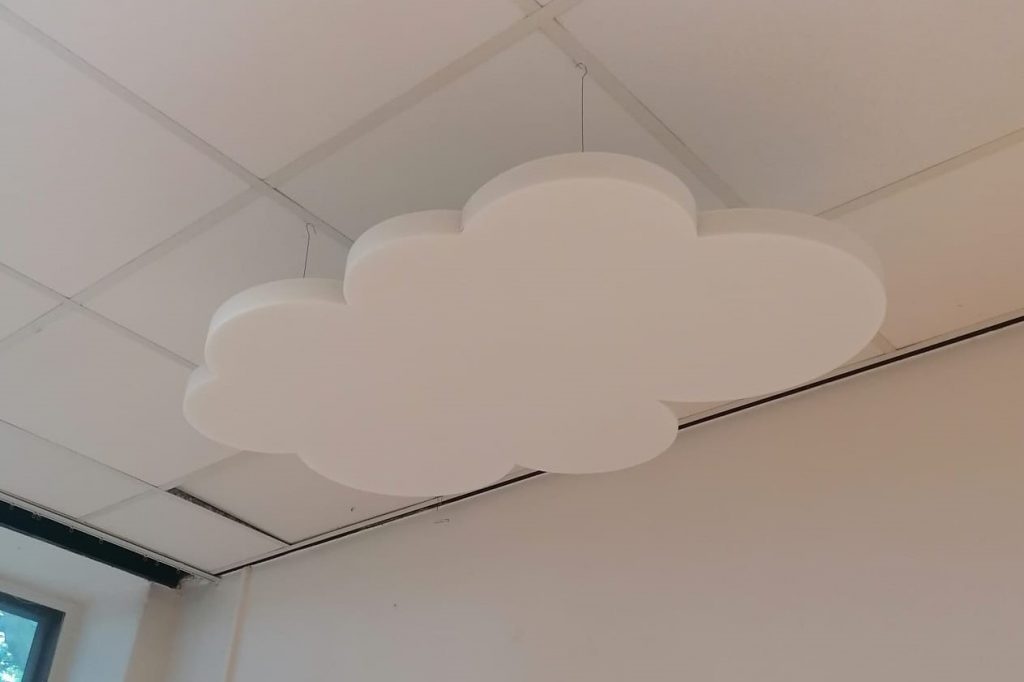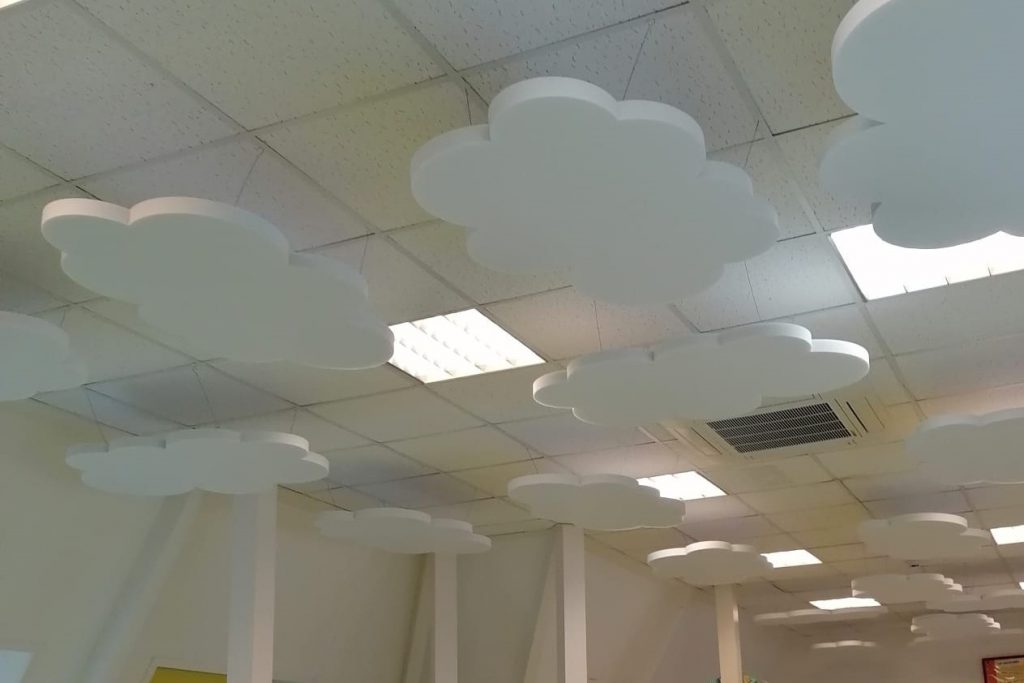Initial Assessment and Measurements
Before we could tackle the problem, we started off by conducting measurements of the original acoustic situation. The initial measurements showed values that exceeded more than 5 times the norm. This emphasized the necessity for acoustic enhancements. The primary goal was to align the acoustic conditions with established norms, targeting a reverberation time (RT) between 0.3 and 0.6 seconds which is the standard for spaces in daycare centers.
Acoustic Solution
To address the poor acoustics in the various rooms, we introduced our Acoustic Cloud sound-absorbing panels, by suspending them from the ceilings. These panels not only effectively diminish noise but also enhance acoustics in environments like classrooms. The playful cloud-shaped design is especially suited for a childcare center like this. With coverage guidelines suggesting placement over about 1/3 of the floor space, these panels were strategically positioned. By implementing these Acoustic Clouds, the reverberation time was reduced within the acceptable range of 0.3 to 0.6 seconds in all rooms after installation. This improvement is particularly noticeable in bustling environments with numerous children, ultimately fostering an optimal learning and interaction atmosphere.
Measurement Comparison
To illustrate the effectiveness of the acoustic improvement project, a comparison was drawn between the initial RT 60 measurements, and the measurements obtained after the installation of the acoustic clouds. RT 60, or Reverberation Time 60, assesses a room’s acoustic qualities by measuring the duration it takes for sound to decrease by 60 decibels from its original level. The results highlighted a substantial reduction in reverberation time, which validated the success of the project in improving the acoustic conditions within the rooms.





